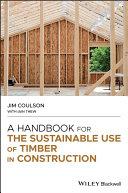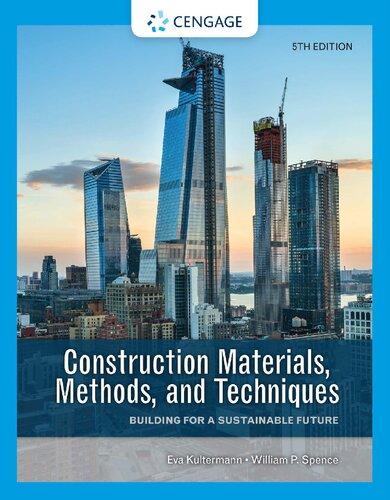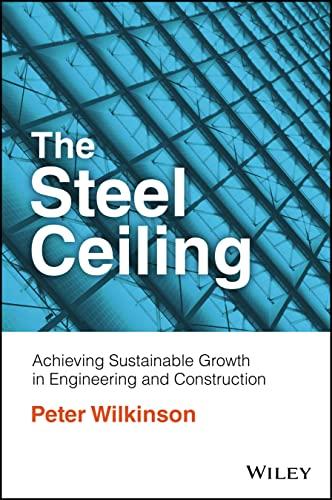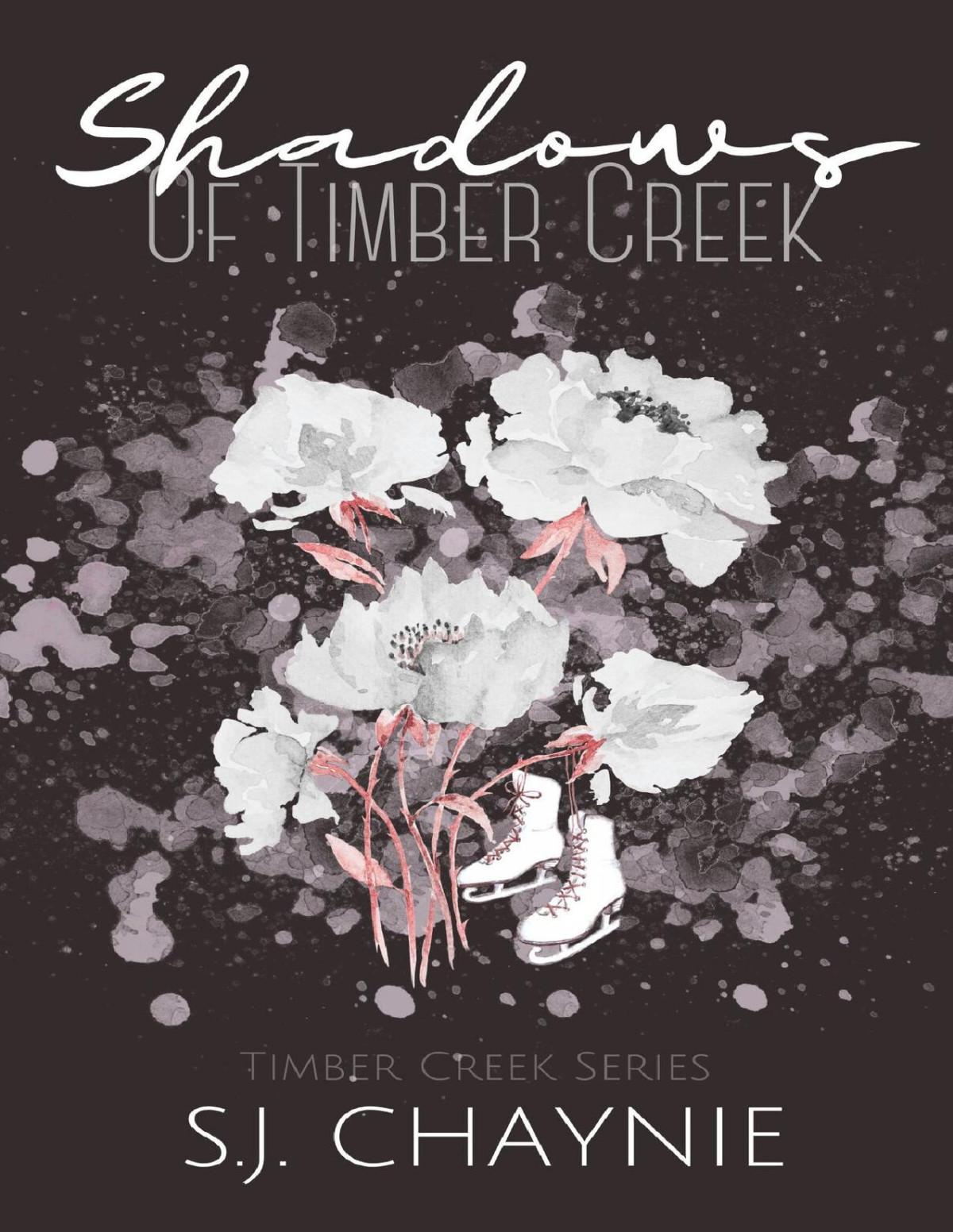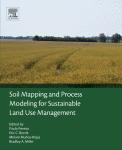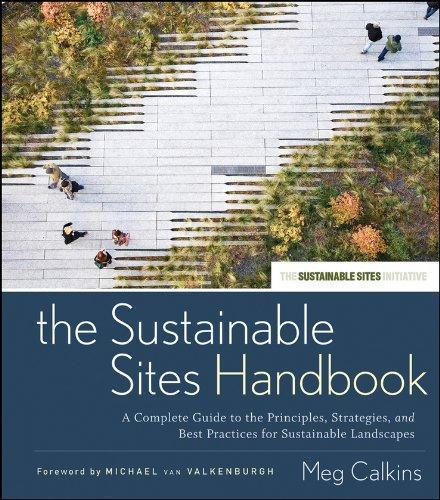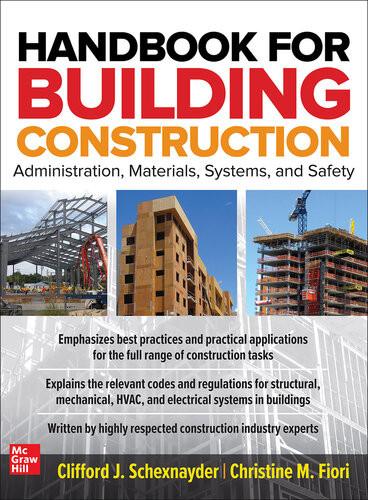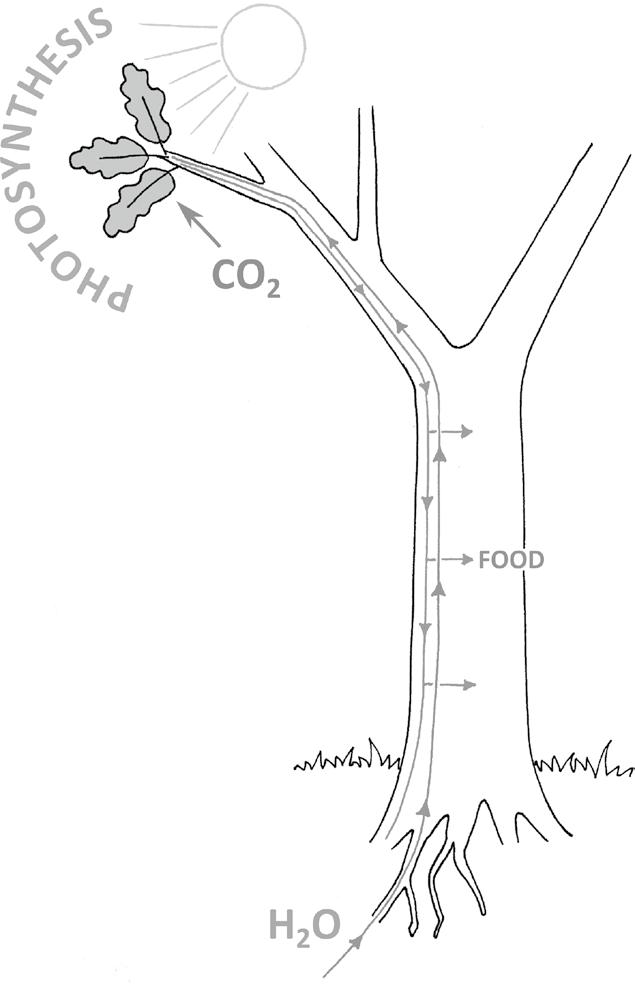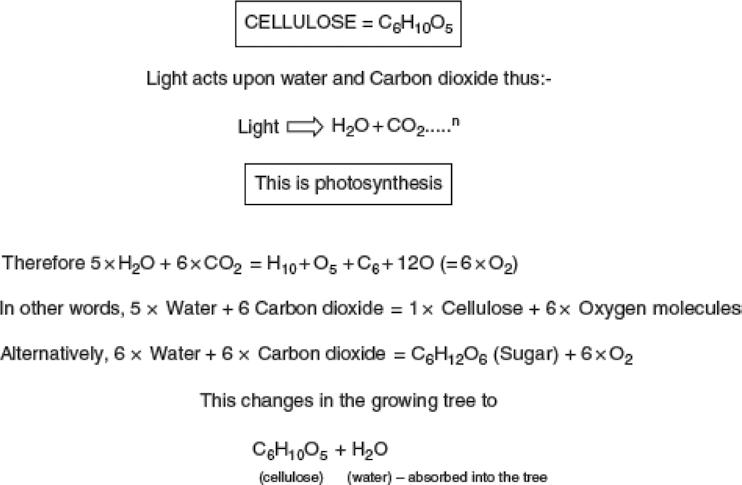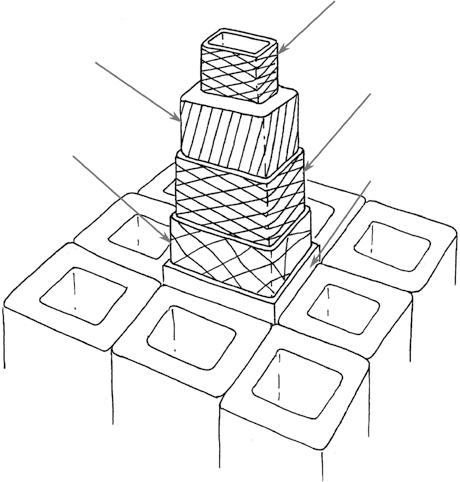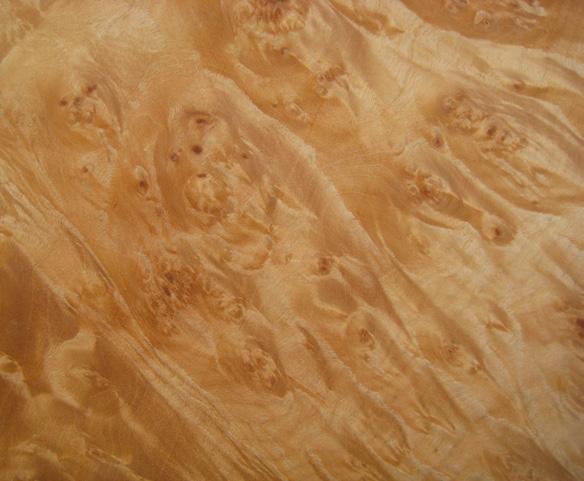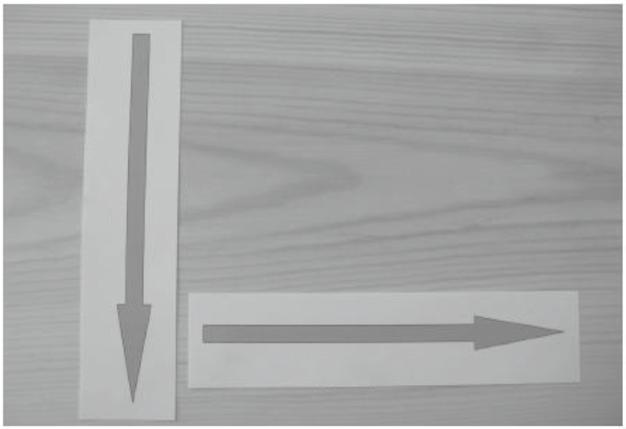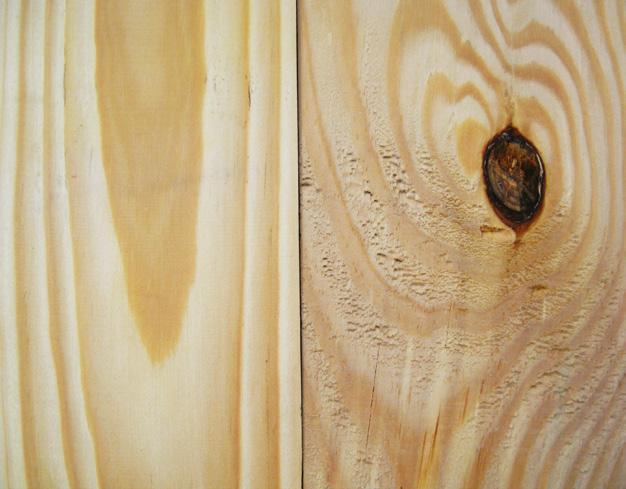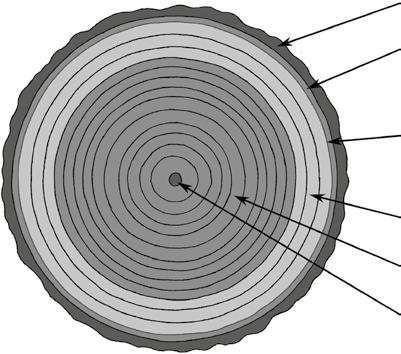A Handbook for the Sustainable Use of Timber in Construction
Jim Coulson
This edition first published 2021 © 2021 John Wiley & Sons Ltd
All rights reserved. No part of this publication may be reproduced, stored in a retrieval system, or transmitted, in any form or by any means, electronic, mechanical, photocopying, recording, or otherwise, except as permitted by law. Advice on how to obtain permission to reuse material from this title is available at http://www.wiley.com/go/permissions.
The right of Jim Coulson to be identified as the author of this work has been asserted in accordance with law.
Registered Office
John Wiley & Sons, Inc., 111 River Street, Hoboken, NJ 07030, USA
John Wiley & Sons Ltd, The Atrium, Southern Gate, Chichester,West Sussex, PO19 8SQ, UK
Editorial Office
9600 Garsington Road, Oxford, OX4 2DQ, UK
For details of our global editorial offices, customer services, and more information about Wiley products, visit us at www.wiley.com.
Wiley also publishes its books in a variety of electronic formats and by print‐on‐demand. Some content that appears in standard print versions of this book may not be available in other formats.
Limit of Liability/Disclaimer of Warranty
In view of ongoing research, equipment modifications, changes in governmental regulations, and the constant flow of information relating to the use of experimental reagents, equipment, and devices, the reader is urged to review and evaluate the information provided in the package insert or instructions for each chemical, piece of equipment, reagent, or device for, among other things, any changes in the instructions or indication of usage and for added warnings and precautions. While the publisher and authors have used their best efforts in preparing this work, they make no representations or warranties with respect to the accuracy or completeness of the contents of this work and specifically disclaim all warranties, including without limitation any implied warranties of merchantability or fitness for a particular purpose.
No warranty may be created or extended by sales representatives, written sales materials, or promotional statements for this work. The fact that an organization, website, or product is referred to in this work as a citation and/or potential source of further information does not mean that the publisher and authors endorse the information or services the organization, website, or product may provide or recommendations it may make. This work is sold with the understanding that the publisher is not engaged in rendering professional services. The advice and strategies contained herein may not be suitable for your situation. You should consult with a specialist where appropriate. Further, readers should be aware that websites listed in this work may have changed or disappeared between when this work was written and when it is read. Neither the publisher nor authors shall be liable for any loss of profit or any other commercial damages, including but not limited to special, incidental, consequential or other damages.
Library of Congress Cataloging‐in‐Publication Data
Names: Coulson, Jim (James C.), author. | Wiley-Blackwell (Firm), publisher.
Title: A handbook for the sustainable use of timber in construction / Jim Coulson.
Description: [Hoboken, NJ] : Wiley-Blackwell, 2021. | Includes index.
Identifiers: LCCN 2020025971 (print) | LCCN 2020025972 (ebook) | ISBN 9781119701095 (cloth) | ISBN 9781119701149 (adobe pdf) | ISBN 9781119701132 (epub)
Subjects: LCSH: Sustainable construction. | Timber--Standards. | Wood products--Standards. | Sustainable buildings--Design and construction.
Classification: LCC TH880 .C688 2021 (print) | LCC TH880 (ebook) | DDC 691/.1--dc23
LC record available at https://lccn.loc.gov/2020025971
LC ebook record available at https://lccn.loc.gov/2020025972
Cover Design: Wiley
Cover Image: © Chris Rogers/Getty Images
Set in 10/12pt PalatinoLTStd by SPi Global, Chennai, India
3
4 Specifying Timber: For Indoor or Outdoor Uses – With Some Information
5 Wood Preservatives and Wood Finishes
5.4
5.7
6 Timber Quality: Defects in Wood and Grading for Appearance
6.1
8
9
10
10.6 Managed forests: conifers
10.8 Plantations: both softwoods and hardwoods
10.9 Planting trees to help with climate change
11 The Concept of ‘Sustainability’
11.2 What can we do to help?
11.3 Should we be cutting down trees?
11.4 Using the forest resource: the economic argument
11.6 The UK Timber Trade Federation and its ‘responsible purchasing policy’
13.3 The UK government’s requirements for TPP
13.4 Category A and category B: ‘proof of compliance’
13.5 Current and future supplies of certified timber
13.6 The EUTR: Europe’s compulsory ‘timber legality scheme’
13.7 Due Diligence
13.8 How to Satisfy the EUTR (or now, in the UK, the UKTR)
13.9 Putting together a due diligence system
14 Softwoods Used in Construction – With Their Main Properties and Sustainability Credentials
14.1
14.2
European redwood, or scots pine (Pinus sylvestris)
European whitewood (principally Picea abies)
14.3 Sitka spruce (Picea sitchensis)
14.4 Western hemlock (Tsuga heterophylla)
14.5 ‘Douglas fir’ (Pseudotsuga menziesii)
14.6 Larch (mainly Larix decidua and Larix kaempferi/Larix leptolepis)
14.7 ‘Western red cedar’ (Thuja plicata)
14.8 Southern pine (Pinus spp., principally Pinus elliottii, Pinus echinata, Pinus palustris, and Pinus taeda)
14.9
(Pinus strobus)
15 Some Hardwoods Used in Construction – With Their Main
(Dicorynia guianensis or Dicorynia paraensis)
European (mainly Betula pubescens, sometimes Betula pendula)
(Klainedoxa gabonensis)
15.16 Gedu nohor (Entandrophragma angolense)
15.17 Greenheart (Chlorocardium rodiei; formerly Ocotea rodaiei)
(Clarisia racemosa)
(Terminalia ivorensis)
(Milicia excelsa)
(Goupia glabra)
(Dryobalanops spp.)
(Dipterocarpus spp.)
15.24 Kosipo (Entandrophragma candollei)
15.25 Mahogany, African (principally Khaya ivorensis and Khaya anthotheca)
15.26 Mahogany, Central American (Swietenia macrophylla)
15.27 Maple (Acer saccharum)
15.28 Majau (Shorea spp.)
15.29 Massaranduba (Manilkara spp.)
15.30 Meranti (Shorea spp.)
15.31 Merbau (Intsia bijuga)
Missanda (Erythrophleum guineense and Erythrophleum ivorense)
15.34 Oak, American red (principally Quercus rubra and Quercus falcata)
15.35 Oak, American white (principally Quercus alba and Quercus prinus, but also Quercus lyrata and Quercus michauxii)
15.36 Oak, European (mainly Quercus robur, but also Quercus petraea)
15.37 Obeche (Triplochiton scleroxylon)
Omu
Opepe (Nauclea diderrichii)
15.40 Padauk (Pterocarpus soyauxii)
‘Red grandis’ (really Eucalyptus grandis)
Sapele (Entandrophragma cylindricum)
Tatajuba (Bagassa guianensis)
Teak (Tectona grandis)
15.48 Utile (Entandrophragma utile)
15.49 Walnut, American (Juglans nigra)
15.50 Walnut, European (Juglans regia)
15.51 Whitewood, American or tulipwood (Liriodendron tulipifera)
16 The Use and Reuse of Timber and Wood-Based Products: The Carbon Cycle, End-of-Life Disposal, and Using Wood as Biomass
16.1 Should we ‘save’ all the trees?
16.2 The true ‘carbon cycle’
16.3 End-of-life disposal of timber and wood-based products
Wood as a Material
The first thing that we need to get absolutely clear in our minds, right from the start of this book, is that there really is no such thing as ‘wood’. . . (‘What!?’ I hear you say, ‘Have you gone mad?’) Well, of course, there definitely is the stuff that grows on trees (or, more correctly, the stuff that grows inside trees): but what I am trying to get at here is that there is not one individual, unique, and singular substance with infinite properties and uses that can simply be referred to just as ‘wood’. There is no one highly specialised species of tree which can give us a material that will do every single job without any problems and with no prior thinking or preparation, no matter how simple that job might be.
‘Wood’, as most laymen are apt to use that word, is merely a catchall term that covers a quite staggering range of possibilities in terms of appearance, abilities, and potential uses: from the hard-wearing to the hardly worth bothering with; from the very strong and durable to the very weak and rottable. My aim in this book is to show you that any particular named species of wood can be very different in its properties – and therefore in its usefulness for a specific job – to some other vaguely similar species.
An obvious comparison is with what we mean when we use the word ‘metal’. If you should go along to a broker or a stockist of metals, then the first thing you’re likely to be asked is exactly what type of job you intend to do with the ‘metal’ you’re looking to buy. The answer to that question will govern the properties you will want that ‘metal’ to possess. Do you require it to have a high tensile strength, or a good degree of ductility, or a shiny surface, or a light weight, or what? If you can’t specify precisely what you need your ‘metal’ for, then you may be offered a whole slew of options: ranging from steel, to brass, to copper – or tin, or lead, or mercury (which, of course, is liquid at room temperature), or even calcium (yes, although it’s a major part of your bones, it’s actually a metal!). All of these ‘metals’
A Handbook for the Sustainable Use of Timber in Construction, First Edition. Jim Coulson. © 2021 John Wiley & Sons Ltd. Published 2021 by John Wiley & Sons Ltd.
are – as you probably know – very different from one another, with huge variations in their physical and chemical properties; but all of them fit the vague and general description of being a sort of ‘metal’. Why, then, should we presume that the situation is any different when it comes to the ‘wonder material’ that we call wood?
Probably a good question to ask would be: ‘Why do so many people assume that “wood” is all that they need to ask for and specify?’ Even those professionals who try to take more care about what they do or write often think that they’ve done enough by asking just for a ‘hardwood’ or a ‘softwood’ – as though that somehow defines more accurately the properties that they require of their material. Even such apparently extra clarity is simply not good enough, as I want now to show you in this revised and updated volume of mine.
Every single individual species of wood has certain very specific properties; and therefore, it must follow, certain potentially good uses and certain other not-quite-so-good uses. Many wood species may have other things about them that we might do best to avoid, or at least restrict. Thus, the individual properties of this immensely variable material will be subtly – or maybe even greatly – different as we move from one species to another. In essence, no two ‘woods’ are quite the same as one another; just as no two ‘metals’ are exactly the same.
Sometimes, of course, the differences in properties are quite minor, and they will not significantly affect the outcome if one species is used instead of another. But quite often, the differences between wood species options can be absolutely vast – the equivalent of using chalk instead of cheese. (I know nobody builds with cheese – but sometimes, they might just as well, for all the good their chosen material does!)
At least 60 000 (and still counting) different species of wood are estimated to have been discovered and described by botanists and wood scientists to date. You may thus begin to see that you really do need to know a whole lot more than perhaps you thought you did in order to begin to understand exactly what sort of ‘wood’ you should be asking for – and, of course, what species.
As already hinted at, however, it’s not only a question of species – vitally important though that is. The quality and the grade of the timber are also very significant factors in getting the best performance at the best price, as are a number of different processes and treatments that can (and quite often should) be applied to it, once its species and final quality have been decided upon.
Some of these other processes include moisture content (mc; this has to do with how wood dries), treatment (i.e. preservatives), coatings and finishes (paints and stains), and care during delivery and storage. All of these things are, in my humble opinion, equally essential factors in getting a good job done properly when using timber. Not to mention all the additional complexities that are
involved in specifying and using wood-based board products, such as plywood, chipboard, and medium density fibreboard (MDF). I will explain the most important of these different factors and processes in somewhat greater detail in later chapters; for now, I want to begin the journey toward your timber enlightenment by looking at the way that wood is actually made in trees – and what complex things it is made of.
1.1 Tree growth and wood formation
Figure 1.1 shows a diagram of a typical tree (just for now, it doesn’t matter about the individual tree species or wood type). It demonstrates that a tree has a number of different elements or components, some of which provide pathways for liquids and nutrients to be moved around within the tree’s trunk as it grows. First of all, we should see that the tree’s root system takes up moisture from the soil and transfers it vertically up the trunk, all the way to the leaves; then, the leaves undertake the really amazing process of extracting carbon dioxide from the atmosphere to manufacture – quite literally, out of thin air – the material that we know as wood. I explain in the next section more details of the chemical process (known as photosynthesis) whereby this miracle happens – but first you need to understand a little of how it happens within the tree.
Water from the soil is moved upwards through the cells which make up the first few growth layers of wood immediately below the bark (we will describe and discuss this part of the tree in greater detail a bit later; for now, let’s just get to grips with the overall process). Once in the leaves, it is combined with the carbon dioxide extracted from the air, assisted by chlorophyll (that’s the ‘green stuff’ in leaves, which is a catalyst: something that assists a chemical reaction but takes no active part in it) and powered by the energy from the sun. We can thus see that wood as a material actually traps the sun’s energy and stores it away: this is why one of the earliest uses of wood by humanity was – and still is – as a source of fuel. But the main thing which wood captures and stores away (in a process which we call ‘sequestration’) is carbon, in the form of CO2. So trees do us and our planet an enormous amount of benefit, simply as a sideline to their making the wood substance that they themselves require just in order to stand there and be trees!
The chemicals which are made in the leaves, using the power of sunlight, then need to be got back down into the trunk, so that the tree can complete the clever process of making wood. That downward transfer of nutrients is performed by the inner bark, which (for some reason that is lost in the mists of time) has been granted two ‘official’ names: the ‘bast’ and the ‘phloem’. If you want to imagine what phloem (let’s just stick to the one name for now!) looks and
feels like, then just think of a cork in a wine bottle. Not one of the newer, plastic ‘corks’ (and, of course, definitely not a screw top), but the traditional one that you can still find in the necks of many Spanish or Portuguese wines and which you have to wrestle out
Figure 1.1 Schematic of how photosynthesis works within a living tree.
with a corkscrew. Perhaps surprisingly, that cork is pure phloem: it is literally the inner bark of a very special tree – the cork oak – which has been harvested for that very purpose for countless centuries, because its phloem happens to be particularly thick and abundant. But all phloem – that is, all the inner bark of all trees – is essentially like that: spongy and full of pathways, which conduct the nutrients that the leaves have made back down the trunk to be fed inside the tree and used to make its essential ‘woody’ ingredients. And chief amongst these ingredients – the chemical which contributes most to the overall properties of wood as a material – is cellulose.
1.2 Cellulose, carbon dioxide, and oxygen
All wood cells are made predominantly from cellulose (that is, around 70–80% of overall wood ‘bulk’, depending upon species and growth habit). It is true that both the chemistry and the physics of wood are somewhat more complex than this simple statement would imply, but I don’t need to go too deeply into the chemistry and physics here in order to allow you to appreciate the wonderful properties of this unique material. Suffice it to say that the main ingredient of wood – and, therefore, what gives this natural material most of its significant properties – is the organic substance which we term ‘cellulose’ (so named because it is the primary ingredient of many plant cells). However, trees also make a ‘waste product’ which most of the living things on this planet require to be able to live: oxygen. Thus, not only do trees make a material which we find incredibly useful, not only do they trap and store away (sequester) planet-harming carbon dioxide, but as a bonus they also keep us alive with oxygen supplies! How many other building materials can claim to do so much for the planet and for humanity?
Cellulose is made by (and within) the tree itself, using as its basic building blocks the sugars and starches manufactured in the leaves by photosynthesis (as already discussed). So, in fact, every tree (and almost every green living plant, for that matter) is a fantastic, natural chemical factory. Utilising nothing more complex than water, drawn up from the ground via its root system, and adding to it the carbon dioxide that it literally sucks out of the air through its leaves, this wonderful ‘chemical plant’ combines the most basic of ingredients by shuffling their atoms and molecules around to produce completely new substances.
Figure 1.2 shows how a tree ends up with cellulose just by recombining the basic atoms of water and carbon dioxide. But this does not happen immediately. In order to begin the process, the tree first uses six molecules of H2O (water) plus six molecules of CO2 (carbon dioxide) to manufacture – as a first step – a single molecule of sugar, whose ‘makeup’ is C6H12O6. An extremely useful byproduct of this
chemistry – certainly so far as we humans are concerned – is 12 ‘spare’ atoms of oxygen, which are helpfully released into the atmosphere in the form of six molecules of O2.
After making itself a supply of basic ‘carbohydrates’ (that is, sugars and starches; these are quite similar in their chemical construction, all using only the atoms C, H, and O), the growing tree uses them to manufacture cellulose (C6H10O5) and other essential chemical ingredients, as and when they are needed. As it does so, it releases one ‘spare’ molecule of water – which is reabsorbed into the tree so that nothing gets wasted. Simple!
Having seen that a tree can conveniently make its own cellulose (plus a few other important ingredients, which we will discuss in a bit more detail later), we should perhaps try to learn something about this particular substance. The most fantastic thing about cellulose is that it is strong: very strong, indeed. It is, in effect, a natural type of carbon fibre, invented by Mother Nature long before humans ever started to get clever with chemistry and physics.
Primarily, it is the very strong chemical bond between the carbon atoms in the cellulose molecules that gives wood its incredible strength. (Chemists call these molecules ‘long-chain’ molecules, because of their highly organised, elongated, and linked-together structure.) A good demonstration of the fact that cellulose (and therefore wood) has such very high strength, which it gets from the
Figure 1.2 How trees make wood and give us oxygen.
linked atoms of carbon in its molecular chains, is provided by an experiment conducted at a major UK university (Leeds, if I recall correctly) in the 1960s. This experiment consisted of pulling apart two equal-weight strands – one made of European pine and one of a high-tensile steel wire – using a special testing machine, called a ‘tensometer’ (which pulls things apart in tension). The researchers measured the force that it took to snap each strand – and found that, weight for weight, wood was actually stronger, in tension, than steel! However, the picture is not quite as straightforward as perhaps I’ve implied when it comes to establishing exactly why and how wood is so strong. As well as knowing its chemistry – that is, that wood is made up of very strongly-linked molecules of cellulose – we also need to consider its physical structure when it comes to looking at how it performs when it is used for any particular job. I now need to tell you about the way wood is – quite literally – put together, in order that you can properly understand how best to use it.
1.3 The essential cell structure of wood
Figure 1.3 shows us an ‘exploded’ view of a typical softwood cell, which is called a ‘tracheid’ (we will refer to this cell type in more detail a bit later, so don’t worry too much about it for now). To see
Figure 1.3 ‘Exploded’ view of a typical softwood tracheid, showing the different cell-wall layers.
S2 layer
S3 layer
S1 layer
Middle lamella
Primar y wall
just how intricate wood’s structure is, I would like you to look carefully at the different component parts of the cell wall, as shown in the diagram.
The first two main elements – that is, the parts that divide (or separate) the individual wood cells from one another – are not of any great significance to this part of our story, so we can more or less ignore them for now; for completeness, they are called the middle lamella and the primary cell wall. The part of the wood cell wall that is really, really important to our understanding of fundamental wood properties and behaviours is the secondary wall; this is divided, as you can see, into three distinct ‘layers’, which are called, for convenience, ‘S1’, ‘S2’, and ‘S3’.
Apart from cellulose, there are two other chemical ingredients of wood which you need to be aware of. One is a substance (or rather, a collection of similar substances) called ‘hemicelluloses’; these may perhaps be thought of as incompletely-formed cellulose molecules, which act as a kind of ‘filler’ or ‘bulking agent’ within the cell walls and play some part in altering the physical properties of wood. The other is ‘lignin’, a sort of natural adhesive which infiltrates the cell walls and effectively sticks all of their ingredients together. At this stage, a simple analogy may perhaps help us to understand the complex makeup of wood cells a little more clearly.
We may adapt the idea of a fibreglass resin-bonded material (such as is used for lightweight car bodies and kayaks, etc.) to describe how wood is put together on the submicroscopic scale. (Stop Press: Some very new research – which has not yet been fully digested, nor fully accepted everywhere – would seem to suggest that this ‘fibreglass’ analogy may be a little too simplistic. But for now, it is a good enough approximation to do the present job, if I am to help you to better understand the highly complex structure of wood.) In fibreglass, very thin strands of glass (which at that scale are flexible rather than brittle) are set into a ‘mat’ of resin, which keeps them together; thus, between the two ingredients (glass and resin), we end up with a material which has infinitely superior properties to either substance on its own, with respect to its strength and moulding abilities.
In wood cell walls, the equivalent to the resin-bonding ‘mat’ is the combination of the lignin and the hemicelluloses: in fact, lignin is chemically quite similar to some plastic resins that are used as adhesives – the eventual hope is that we may be able to extract lignin from wood and use it as an alternative to oil-based plastics (but that’s another story). But what is wood’s equivalent to the glass fibre strands that give fibreglass its strength? The answer is cellulose ‘microfibrils’.
Microfibrils are made from pure chains of cellulose; they can only be detected by means of electron microscopy. We saw earlier that cellulose is incredibly strong in tension, and it is the particular arrangement of these cellulose microfibrils which makes it so. Note in
Figure 1.3 that the microfibrils (which are shown as fine lines within the wall layers themselves) are arranged in a criss-cross pattern in both the S1 and S3 layers, which are relatively thin. The reason for this is that the microfibrils provide a sort of ‘corset’ effect, which braces the cells against bursting when wood is loaded vertically in compression. But you can also see that the S2 layer has its microfibrils arranged only vertically (well, more or less vertically: the angle alters subtly with the type of wood tissue laid down – but I’m now in danger of making the whole thing over-complex, so let’s just leave it as we’ve drawn it in the diagram) and not criss-crossed over one another. Furthermore, the S2 layer itself is by far the thickest of all of the cell wall layers, by some considerable margin. It is the differentlydetailed structure – and therefore the physical performance – of the S2 layer that most governs the behaviour of wood cells on the submicroscopic level, and thus the behaviour of wood itself on the larger (or gross) level – which we can actually see and measure.
If you look again at the S2 layer, you should now see that its main structure provides a more-or-less vertical alignment of the majority of the cellulose microfibrils in the wood cell wall. In doing so, it gives each wood cell – and therefore, on the gross scale, wood itself, as a material – a very great resistance to being pulled apart in tension (if you remember from earlier, we said that the carbon bonds in cellulose are incredibly strong in tension). And remember that this very, very tiny molecular structure is being held in place by the lignin and hemicelluloses, allowing the microfibrils to do their ‘strength’ job properly.
The upshot of this incredibly intricate arrangement of microfibrils – which are concentrated longitudinally mostly in the S2 layer, but are also helpfully arranged in a criss-cross pattern in the S1 and S3 layers (and, as you can see, in the primary wall as well) – means that wood in its gross properties can resist both compression and tension (especially tension) whenever it is subjected to all the stresses and strains of everyday life: both as a tree and as the material that we use. Clever, or what?
The arrangement of the S2 layer’s microfibrils also has a profound influence on the behaviour of wood in its reaction to moisture – but I will leave that explanation until a little later. I am still, at present, dealing with wood’s fundamental structure and how that influences many of its working properties. So, having for the moment dealt with how cellulose makes wood fundamentally what it is, I will carry on with my explanation of exactly how wood’s structure works.
1.4 Wood grain
Trees (and therefore, of course, wood) have an inherent ‘grain’ structure. Grain is one of those very common and yet very overused words
that laymen love to bandy about when referring to wood in all sorts of ways – not least when describing its appearance (which is quite wrong, as I will explain). The word ‘grain’ has in fact a very precise meaning, so I feel it’s important that I should get you to use it correctly. First of all, what grain is not is that very interesting, sometimes wavy, sometimes stripy or curly – and thus often highly decorative – pattern which we so often see on the surface of a piece of planed or sawn timber. (And I wouldn’t mind betting that most of you have used the word ‘grain’ in that context: in fact, I suspect that perhaps many of you, or your colleagues, still do.) The correct name for the decorative surface pattern on a piece of timber is its ‘figure’ (see Figure 1.4). The figure in wood can often (although not always) show us what the grain may be doing; but it is decidedly not the same thing as the actual ‘grain’ of the wood. Sometimes, misreading the figure and thinking it is the grain can lead to physical damage of the wood you are trying to use, and sometimes it can lead to unnecessary rejection of the timber – for example, when undertaking strength grading (a topic that I will discuss in detail in Chapter 7).
So, if it is not the nice pattern that you can see on the surface of the wood, then what exactly is grain? Well, in my book (quite literally, as well as metaphorically!) the term ‘grain’ specifically relates to the direction of the wood fibres: that is, the way they grow within, along, and up the trunk of the tree; or the way in which they are aligned along the length of a cut board or plank of wood (see Figure 1.5).
Figure 1.4 Example of figure (i.e. the pattern) on the surface of timber.
The principal vertical (or longitudinal) individual cells in the tree trunk – which, for now, we’ll refer to simply as ‘fibres’ – are relatively long (say, about a millimetre in softwoods, but much shorter in hardwoods), but they are extremely narrow, and they generally grow quite straight: as I have said, along and up the main axis of the trunk.
These basic wood cells (of whatever wood type) grow mostly in the form of hollow tubes, which have a relatively thin cell wall, with a hole (known as the cell ‘cavity’ or ‘lumen’) that runs all the way down their middle. In the living tree, this lumen or cell cavity is full of sap (‘tree juice’). But when a tree is cut down, the sap dries out (sooner or later), leaving the ‘dry’ wood essentially as a network of relatively long but narrow, hollow tubes, full of air. (I will return to the subject of the correct drying of timber and its consequences in Chapter 3.)
These tube-like ‘wood fibres’ all point more or less in the same direction (along the axis of the tree trunk, or the length of a board or plank, as I’ve said). So please remember from now on that you should (and I definitely will!) only use the word ‘grain’ to mean one thing: ‘grain in timber is the direction of the wood fibres’ – and that is the most important word: ‘direction’.
You should now see that, if we cut up a log in a good and efficient way, such as usually happens in a sawmill, we will (hopefully) find that the wood fibres that were in the tree trunk will still line up so that they are more or less parallel with the long axis of the board or plank of wood that we have produced. And if the cutting has been done
Figure 1.5 Wood surface showing the wood’s grain (its ‘fibres’).
well, then the grain will run pretty straight along its length. I hope you will now understand that the strong molecular ‘chains’ of cellulose (which, as I said earlier, make up the bulk of the wood-fibre walls in the S2 layer) can contribute their very high ‘chemical-bond’ strength to the physical ‘along-the-grain’ strength performance of the wood. It is thus immediately possible to state one definitive fact about a basic property of wood: ‘the straighter the grain, the stronger the piece of timber’.
Unfortunately, there is always a plus and a minus where wood is concerned (as you will see several times in the course of this book). The ‘plus’ is that the cellulose makes wood very strong when loaded along the grain. But the ‘minus’ is that all of the long, thin wood cells that are in the tree or along the plank of timber are, as we saw earlier, stuck together by a natural sort of glue, known as ‘lignin’.
Lignin is a very complex chemical whose structure is still not fully understood. But one thing that we do know about it is that it is does not hold the wood cells together very strongly in tension, side-by-side. Therefore, the wood fibres may be pulled apart relatively easily in this direction – and it is this sideways orientation that we usually refer to as being ‘across the grain’.
So, because of both its chemical makeup (mainly cellulose and lignin) and its very particular microscopic physical structure (a whole bunch of long, very strong, tube-like ‘fibres’ which point along the line of the grain but are nonetheless stuck together relatively weakly), wood ends up being a very unusual material in terms of its strength performance. Wood scientists like to say that wood is anisotropic: a posh word that basically means, ‘it behaves quite differently under different directions of loading’ – as I will now explain.
Consider a brick, or a block of concrete. Load it (by, for example, squashing it beneath the weight of a wall in a building) and it will resist the load – which is a compressive force – to the best of its ability. As you might reasonably expect, a brick or a block of concrete is capable of resisting load pretty equally, in all of the usual three directions: width, breadth, and depth. By the same token, a steel joist will be more or less equally strong when it is loaded in bending or in tension, in each of the same three directions. In fact, just about all of our building materials, by and large, behave more or less equally in terms of their strength in all of the different directions of loading. All of them, that is, except for wood – and that is because of wood’s highly ‘anisotropic’ nature, which it possesses on account of its very special ‘grain’ structure.
Compared with our other building materials, wood really is very unusual. It is – as I’ve just explained – incredibly strong along the grain (and remember, that’s along the direction of its fibres). But it is very weak across the grain (that is, sideways, across both the width and the breadth of a timber member) (see Figure 1.6). This strength difference – taken as an average amongst most common wood
species – is about 40 times greater in tension along the grain than it is across the grain. Just think about that for a second: 40 times! That’s an incredible difference in the behavioural properties of one single material – and one that is dependent only upon its direction of loading.
So that’s why everyone who uses timber should always try to use it in such a way that they can capitalise on its long-grain strength whilst at the same time minimising its cross-grain weakness. And they should do so by making sure that any imposed loads are carried as much as possible along the grain, not across it.
But strength is not the only property of wood that may be influenced by the direction of the grain.
1.5 Dimensional changes in wood
Wood reacts with moisture. Or to be more accurate, it reacts to changes in its mc; and those changes are themselves influenced very strongly by the relative humidity (RH) of the atmosphere in which it is used or stored. I will discuss drying methods and the significance of water in wood in much greater detail in Chapter 3; and there, too, I will explain the vital need to get the wood’s mc right. But for the moment, I want to touch on just one essential concept that is related directly to grain orientation: ‘movement’ (see Figure 1.7).
When wood loses or gains water molecules (note: not actual liquid water) from within its submicroscopic cell structure, the cellulose microfibrils of the S2 layer (see Section 1.3) either come together a little
Along the grain
Figure 1.6 Directions: along and across the grain.
bit or shift apart a little bit in their side-by-side relationship – moving closer together as the H2O molecules leave the ‘packing’ of the hemicelluloses and separating as they get in the way, as it were (it is mainly the hemicelluloses surrounding the microfibrils which act here: ‘slimming down’ or ‘bulking up’ as the loss or gain of molecular water affects them). And when all this happens on the submicroscopic scale, the behaviour of the ‘gross’ wood structure exactly reflects it, so that the wood cells themselves get either ‘thinner’ or ‘fatter’ as water molecules are removed from or packed in between the cell walls. The visible result of this is a measurable shrinking or swelling of the wood, depending upon whether it loses or gains moisture.
However, it is important to note that this change of dimension (and that’s essentially what it is) only happens to any appreciable extent across the wood grain. Wood does not swell or shrink to any significant degree along the grain (at least, not under normal circumstances of use and with ‘normal’, healthy wood). But then, neither does wood change dimension – in any direction – in response to any usual changes in temperature (unlike, say, concrete or steel). And this unresponsiveness to temperature changes is a very useful property of this unique material.
By now you should see that, as well as needing to know in which direction of the grain a piece of timber is orientated, so as to use it to
Figure 1.7
Two pieces of timber: one straight-grained, showing a smooth surface (left), the other with a grain problem, showing a rough, ‘splintery’ surface (right).
its best (strength) advantage, you also need to know which way its grain is orientated, in order to make allowances for any swelling or shrinkage that may happen to timber components in service. So, by understanding wood better, and by looking at it with a more experienced eye, you will be able to tell when you’re dealing with timber in its ‘long-grain’ orientation and thus don’t need to leave any expansion or ‘movement’ gaps in that direction – whereas if you find it is being used in its ‘cross-grain’ orientation, then you’ll know that you must leave adequate movement gaps in that opposite direction in order to avoid potential problems as the wood ‘settles in’ to its environment. (As I have said, the exact details of all this will be explained in Chapter 3, when we discuss water in wood; for the moment, I am simply concentrating on the essential behavioural properties that are common to the grain of all wood, regardless of species.)
Before I leave the subject of grain – at least for the time being – there is another important property of wood, directly related to grain orientation, that I’d like to cover: the ease or difficulty of machining it. Straight-grained timber (as you should now know, that is a piece of wood whose fibres are all nicely parallel with the long, straight edge of the board or plank) is much easier to machine than timber whose fibres ‘stick up’ out of the surface at an angle (see Figure 1.7). If the wood fibres come up to the surface at a relatively steep angle (or, on occasion, at several different angles!) then they will more easily catch on the cutters of a planer, or on the teeth of a saw, and so will make lots of splinters and give the timber a very rough finish. That is yet another reason to appreciate just exactly what the grain of wood is, and to find out in which direction it’s going and what it’s doing within any piece of timber that you are hoping to use. The preceding paragraphs on grain structure are not all you need to know – not by a long way. There are a good many other things to learn about wood which can help you to understand its unique properties. With that in mind, let’s now take a closer look at the cut end of a log (see Figure 1.8).
1.6 Cambium, pith, heartwood, and sapwood
You will not see the cambium in Figure 1.8 – indeed, you would not see it in a real log either, at least not with the naked eye – because it is a microscopic, one-cell-wide layer. However, despite its miniscule dimensions, the cambium is the most important part of any tree, since it does all of the growing of the new wood cells that the tree requires. It grows up as the tree increases in height, it expands as the tree increases in girth, and it grows both outwards (e.g. for new bark) and inwards (for new wood tissue). Thus, even though you can’t see it, the cambium is vital to those of us who use wood! However, you will see all of the other parts I am going to describe now.
Outer bar k
Phloem/bast (inner bar k)
Cambium
(microscopically small: cannot be seen at this scale)
Sapwood
Heartwood
Pith
First, and just for the sake of completeness, I will mention the pith: this is at the very centre of the tree – every single tree, that is. The pith is simply the original food store for the growing shoot: the tip of the tree as the sapling grows upwards, before it has had a chance to make any food. It is soft and squashy – ‘pithy’, you might say! – with no strength, but it is not a ‘defect’ as such – unless you don’t want it appearing on the decorative faces of your timber (see Chapter 6 for more on grading).
But let’s now explore the main features of the log. In many wood species (although, be warned: not in all of them, by any means) you may see a distinct change in the colour of the wood tissue at or near the tree’s centre, or heart. This central zone is thus known as the ‘heartwood’, and it consists of the oldest part of the tree trunk. Trees grow larger by adding layers of wood on to the outside of the stem, just beneath the bark (that’s the reason why trees have ‘growth rings’). Therefore, the newest wood tissue is that which has only recently formed below the bark, whereas the very oldest wood tissue is found deep within the log’s centre, dating back to when the tree was much younger – just a sapling. After a few years (exactly how long depends on various factors: the tree’s particular species, the local climate where it is growing, its forest habitat, and many other things), this central zone at the heart of the tree trunk simply shuts down; and after that, the heartwood takes no further part in the day-to-day growing life of the tree.
But the wood in the heart of the tree doesn’t rot or do anything strange (unless the tree is very, very old and thus over-mature, in which case the heart may eventually rot out, leaving the outer part of the trunk intact). Normally, it simply closes itself off, leaving the
Figure 1.8 Schematic cross-section of a log, showing the different zones from the outside (the outer bark) to the very centre (the pith).
